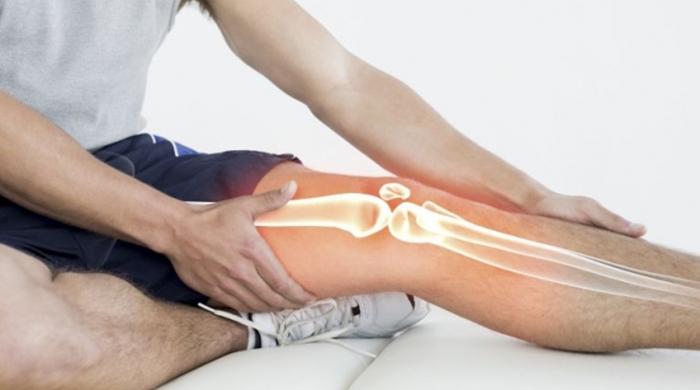
Dentists have known how to fix broken teeth for a long time, and different types of adhesives and methods are used depending on the damage that is diagnosed.
This process is usually known as ‘bonding.’
The fact that we know how to repair teeth in this way may lead to an assumption that fractured bones in other parts of the body may also be easily fixed with an appropriate adhesive.
Yet this strategy has so far been very problematic, and researchers have struggled with finding an effective ‘glue’ for damaged bones. Why?
This tends to be because adhesives aren’t strong enough to keep the bone together, they do not fixate properly in the wet internal environment of the body, or they are not biocompatible. This means that they are either toxic within the body or that they are easily rejected by it.
But recently, researchers from the KTH Royal Institute of Technology in Stockholm, Sweden, have developed an adhesive that, they argue, has none of the problems listed above.
They have been experimenting with a new adhesive substance that will allow us to repair bone fractures more easily and securely. It takes about 5 minutes.
This ‘glue’ uses the same basic bonding technique applied in dentistry - thiol-ene coupling (TEC) - which hardens and sets reliably even when exposed to water and oxygen.
Michael Malkoch - who is a professor of fibre and polymer technology at the KTH Institute - and colleagues have already tested this adhesive in vivo (on rat bones), and they were very pleased with the results.
This has the potential to “unlock a new era of new high‐performance biomedical TEC adhesives with unmet biocompatibility,” the authors write in the introduction to their paper, which was published in the journal Advanced Functional Materials.
‘A paradigm shift in fracture treatment’
The researchers’ adhesive technique is three-layered, much like a sandwich of biocompatible glue and fibre. First, a ‘priming’ layer of glue is laid out on the bone surface, so that the adhesive can begin to seep into the bone tissue.
Then, a fibre patch is added, to reinforce the final strength at the adhesive. A final layer of glue is placed on top to complete this bond.
Prof. Malkoch and his colleagues explain that this procedure lasts no longer than about 5 minutes, and the substance is 55 per cent stronger than commercially available dental adhesive.
“We have finally managed to identify a surgically realisable adhesive to fix bone fractures,” Prof. Malkoch adds.
“The chemistry, materials, and methodology we used result in extraordinary adhesion and fixation to the wet bone,” he says, “which in most cases is incredibly difficult.”
Prof. Malkoch is convinced that the new adhesive and simple bonding technique developed by himself and his colleagues could address the problems of bone fracture recovery. Thus, he has already created a start-up initiative, Biomedical Bonding AB, which is set to start clinical trials as soon as possible.
“We believe that the new findings will lead to a paradigm shift in fracture treatment, which in the future can phase out a large portion of today’s metal plates and screws,” said Prof. Malkoch.
This method, the researchers note, could lead to fewer treatment costs for patients, and it would have a very short recovery period, allowing people to start physical exercise within a day or two from the procedure.
Source: Medical News Today


